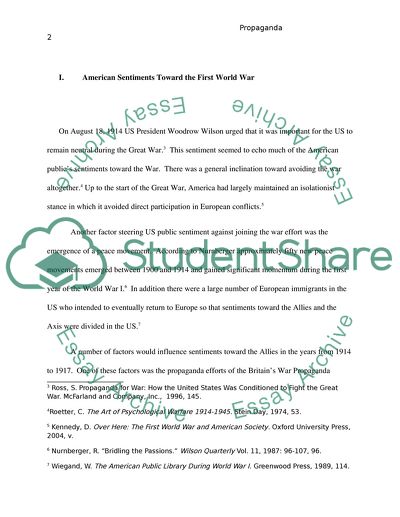Cite this document
(Propaganda Used in the US to Generate Support for its Involvement in Term Paper, n.d.)
Propaganda Used in the US to Generate Support for its Involvement in Term Paper. Retrieved from https://studentshare.org/history/1729148-what-forms-of-propaganda-were-employed-in-the-united-states-during-the-first-world-war-to-generate-support-for-its-involvement-in-the-conflict
Propaganda Used in the US to Generate Support for its Involvement in Term Paper. Retrieved from https://studentshare.org/history/1729148-what-forms-of-propaganda-were-employed-in-the-united-states-during-the-first-world-war-to-generate-support-for-its-involvement-in-the-conflict
(Propaganda Used in the US to Generate Support for Its Involvement in Term Paper)
Propaganda Used in the US to Generate Support for Its Involvement in Term Paper. https://studentshare.org/history/1729148-what-forms-of-propaganda-were-employed-in-the-united-states-during-the-first-world-war-to-generate-support-for-its-involvement-in-the-conflict.
Propaganda Used in the US to Generate Support for Its Involvement in Term Paper. https://studentshare.org/history/1729148-what-forms-of-propaganda-were-employed-in-the-united-states-during-the-first-world-war-to-generate-support-for-its-involvement-in-the-conflict.
“Propaganda Used in the US to Generate Support for Its Involvement in Term Paper”, n.d. https://studentshare.org/history/1729148-what-forms-of-propaganda-were-employed-in-the-united-states-during-the-first-world-war-to-generate-support-for-its-involvement-in-the-conflict.


